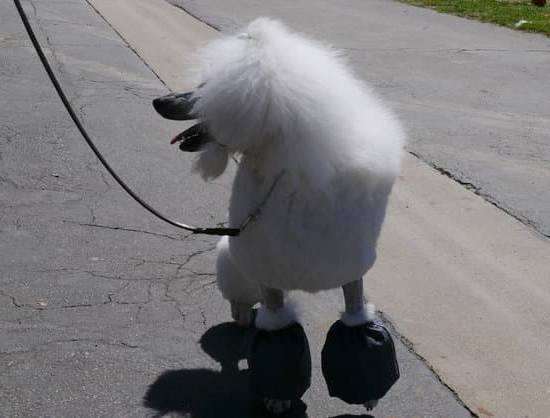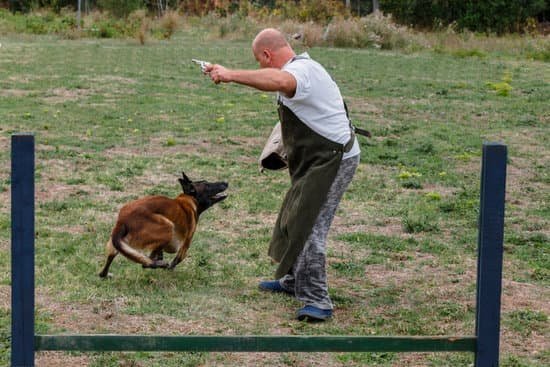Is your old dog constantly running away? It can be a frustrating and concerning behavior that requires understanding and patience. In this article, we will explore the various reasons why older dogs may have the tendency to run away and provide practical tips on how to train an old dog not to run away. From assessing your dog’s physical and mental health to implementing positive reinforcement training techniques, we have you covered.
As our beloved canine companions age, they may experience changes in their cognitive function, hearing loss, or even feelings of boredom, leading them to wander off. Understanding the root causes of this behavior is crucial in addressing it effectively. By recognizing these triggers, pet owners can begin to implement strategies to keep their older dogs safe and secure.
Before diving into training methods, it’s important to assess your dog’s overall well-being. Observing your dog’s behavior and consulting with a veterinarian can provide insight into any underlying health issues that may be contributing to their desire to run away. This proactive approach sets the stage for successful training and ensures that your efforts are tailored to meet your dog’s specific needs.
Assessing Your Dog’s Physical and Mental Health
As older dogs age, they may experience physical and mental changes that can impact their behavior, including the tendency to run away. It is essential for pet owners to assess their old dog’s physical and mental health before embarking on training to prevent them from running away. This step is crucial in understanding any underlying issues that may be contributing to the behavior and addressing them effectively.
One important aspect of assessing your dog’s physical health is observing their mobility and overall condition. Arthritis, joint pain, or other age-related ailments can make it difficult for older dogs to move around comfortably, leading them to seek escape as a way to alleviate discomfort.
Additionally, changes in vision or hearing loss can also contribute to a dog’s inclination to wander off. Observing and recognizing these physical limitations can help pet owners make accommodations that mitigate the desire to run away.
In addition to physical health, it’s equally important to evaluate an older dog’s mental well-being. Cognitive decline in older dogs can manifest as confusion, disorientation, or even anxiety – all of which can prompt them to attempt escaping.
Recognizing signs of cognitive decline such as increased restlessness or aimless wandering is crucial in understanding the root cause of the behavior. Consulting with a veterinarian can provide valuable insight into any potential cognitive issues and help determine suitable interventions for your older dog.
By thoroughly assessing your old dog’s physical and mental health, you can gain a comprehensive understanding of their current state and any potential factors contributing to their desire to run away. This information will guide your approach in implementing effective strategies for training an old dog not to run away while also ensuring their overall well-being is prioritized.
Creating a Safe and Secure Environment
As dogs age, they may become more prone to wandering and running away, which can be concerning for pet owners. Creating a safe and secure environment for your older dog is essential in preventing them from running away and ensuring their safety. In this section, we will discuss practical advice on how to make your home and yard escape-proof for an older dog.
Securing Your Home
One of the first steps in creating a safe environment for your old dog is to secure your home. This may involve installing secure doors and windows to prevent your dog from escaping when you’re not around. Additionally, it’s important to ensure that any potential hazards or escape routes within your home are addressed to keep your older dog safe and secure.
Yard Safety Measures
When it comes to the yard, investing in a sturdy fence can be crucial in preventing your senior dog from running away. Regularly inspect the fence for any gaps or weak spots that could potentially allow your dog to escape. It’s also advisable to keep outdoor gates securely locked at all times, especially if your older dog has shown previous tendencies of attempting to run away.
Using Leashes and Harnesses
In addition to securing your home and yard, using leashes and harnesses when walking or spending time outdoors with your older dog can provide an added layer of security. This not only prevents them from running off but also gives you better control during walks or outdoor activities.
By creating a safe and secure environment both indoors and outdoors, you can significantly reduce the risk of your old dog running away while ensuring their well-being and safety. These measures also provide peace of mind for pet owners as they work on training their older dog not to run away.
Positive Reinforcement Training Techniques
When it comes to training an old dog not to run away, positive reinforcement techniques can be incredibly effective. By using rewards and praise to encourage desired behavior, you can help your older dog understand the importance of staying close and not wandering off. Here are some key strategies for implementing positive reinforcement training techniques:
Step-by-Step Guidance
One of the most important aspects of positive reinforcement training is providing clear, consistent guidance to your old dog. Start by using treats, praise, and consistent commands to reinforce the behavior of staying close to you. When your dog remains near you without running away, immediately reward them with a favorite treat or verbal praise to show them they’ve done something right.
Patient Consistency
It’s important to remember that training an older dog not to run away will take time and patience. Consistency is key, so be sure to practice these positive reinforcement techniques regularly. Over time, your old dog will begin to associate staying close to you with receiving rewards and praise, making it more likely that they’ll continue this behavior in the future.
Bonding and Trust
Incorporating positive reinforcement techniques into your training regimen can also help strengthen the bond between you and your older dog. When they learn that listening and staying close results in positive outcomes, they’ll be more likely to trust and respect your leadership. This increased bond can further discourage running away as your dog will want to remain by your side where they feel safe and rewarded.
By implementing these positive reinforcement training techniques consistently and with patience, you can effectively train an old dog not to run away while strengthening the bond between you and your furry companion.
Establishing Boundaries and Routines
As older dogs age, they may become more prone to wandering or running away due to a variety of reasons. It is important for dog owners to understand the possible causes of this behavior in order to effectively address and prevent it. Some common triggers for older dogs running away include declining cognitive function, hearing loss, and boredom. By recognizing these factors, owners can take proactive measures to train their old dogs not to run away.
One of the most crucial steps in preventing an older dog from running away is establishing boundaries and routines. This involves creating a structured daily routine for your dog and setting consistent expectations. By implementing a stable schedule, older dogs can feel more secure and less likely to exhibit wandering behavior. Additionally, setting clear boundaries within your home and yard can help prevent escape attempts.
One effective way to establish boundaries for an older dog is by using positive reinforcement training techniques. By consistently rewarding desired behaviors such as staying close with treats, praise, and consistent commands, owners can effectively communicate their expectations to their old dogs. This type of training helps reinforce the idea that staying within designated boundaries is rewarding for the dog.
In addition to positive reinforcement training, it’s important for owners to be patient and understanding throughout the process. Older dogs may require more time and repetition when learning new behaviors. By maintaining consistency in training methods and being patient with their furry companions, owners can effectively train an old dog not to run away.
| Training Technique | Effectiveness |
|---|---|
| Positive Reinforcement | Highly Effective |
| Patient Consistency | Key for Success |
Implementing Recall Training
When it comes to training an old dog not to run away, implementing recall training is a crucial step in ensuring their safety. Recall training involves teaching your dog to come back to you when called, which can prevent them from running off and getting lost. Here are some effective recall training techniques and strategies to reinforce this behavior:
1. Use positive reinforcement: When your older dog responds to your call and comes back to you, reward them with treats, praise, and affection. Positive reinforcement will help them associate coming back to you with good things, making it more likely that they’ll do it again in the future.
2. Start in a controlled environment: Begin practicing recall training in a safe and enclosed area, such as your backyard or a quiet park with a fence. This will minimize distractions and provide a secure space for your old dog to practice coming back to you without the risk of running away.
3. Practice regularly: Consistent practice is key to reinforcing recall training. Set aside time every day to work on this command with your older dog, gradually increasing the level of distraction as they become more proficient.
4. Avoid punishment: If your older dog doesn’t immediately respond to your recall command, avoid punishing them. Instead, remain patient and continue using positive reinforcement to encourage the behavior you want.
By implementing these recall training techniques and being consistent in practicing them, you can effectively train an old dog not to run away and improve their overall safety and well-being.
Addressing Anxiety and Fear
As dogs age, they can experience anxiety and fear which may lead to the tendency to run away. It is important to recognize the role of these emotions in older dogs to effectively address the issue. Symptoms of anxiety and fear in older dogs may include destructive behavior, excessive barking, trembling, or hiding. Understanding your dog’s triggers and signs of distress is crucial in addressing their anxiety and fear.
To help alleviate anxiety and fear in older dogs, it is important to provide them with a safe and secure environment. This means creating a comfortable space for them at home where they can feel relaxed and at ease. Additionally, providing mental stimulation through interactive toys, puzzles, and regular exercise can help reduce anxiety in older dogs. It is also helpful to establish a consistent routine as this can provide a sense of security and predictability for elderly dogs.
In some cases, seeking professional help from a veterinarian or animal behaviorist may be necessary to address severe anxiety or fear in older dogs. These experts can provide guidance on behavior modification techniques, medication options, or specialized training programs tailored to your dog’s specific needs. When addressing anxiety and fear in older dogs, it is crucial to approach the training process with patience, understanding, and empathy for your aging pet.
Monitoring Progress and Seeking Professional Help
As you begin the training process to prevent your old dog from running away, it is important to monitor their progress regularly. This will help you assess whether the training techniques are effective and if any adjustments need to be made. Here are some tips on how to monitor your old dog’s progress:
- Keep a record: Create a journal or log where you can track your dog’s behavior, responses to training, and any instances of attempting to run away. This will allow you to identify patterns and measure progress over time.
- Use positive reinforcement: When your old dog successfully stays close or comes when called, reward them with treats and praise. Keep note of how frequently they respond positively to the training methods.
- Seek professional help if needed: If you find that despite consistent training efforts, your old dog continues to display a strong inclination to run away, it may be time to seek the assistance of a professional dog trainer. They can provide expert guidance and personalized strategies for addressing your dog’s behavior.
It is important not to get discouraged if progress is slower than expected. Consistency and patience are key when training an older dog, especially when trying to change ingrained behaviors such as running away. Stay committed to the training process and seek professional help when necessary for the best results in preventing your old dog from running away.
Maintaining Consistency and Patience
In conclusion, training an old dog not to run away requires understanding the underlying reasons for the behavior and addressing them through a combination of physical and mental health assessments, creating a safe environment, positive reinforcement training techniques, establishing boundaries and routines, recall training, addressing anxiety and fear, monitoring progress, seeking professional help when needed, and maintaining consistency and patience.
It is essential to remember that older dogs may face cognitive decline, hearing loss, or boredom, which can lead to their tendency to run away. By assessing their physical and mental well-being with the help of a veterinarian, pet owners can better understand and address their dog’s behavior.
Creating a safe and secure environment by making home and yard escape-proof is critical in preventing older dogs from running away. This may involve utilizing fences, leashes, and secure doors to keep them safe.
Positive reinforcement training techniques are highly effective when it comes to training an old dog not to run away. This involves using treats, praise, and consistent commands to encourage desired behavior. Setting boundaries and routines is also crucial in providing structure for older dogs.
Implementing recall training is important for teaching them to come when called. Lastly, it is important for pet owners to maintain consistency and patience throughout the training process as it may take time for older dogs to learn new behaviors. With these strategies in place, pet owners can successfully train their old dogs not to run away while nurturing a strong bond with their beloved pets.
Frequently Asked Questions
How Do You Train an Older Dog to Stay in the Yard?
Training an older dog to stay in the yard requires patience, consistency, and positive reinforcement. Using a long leash can help teach boundaries while gradually giving more freedom as they learn to stay within the yard.
Can a Dog Be Too Old to Train?
While age can affect a dog’s ability to learn new commands and tricks, it’s never too late to train an older dog. It may take more time and effort, but with patience and the right approach, even senior dogs can still benefit from training.
Can You Train a Dog Not to Wander Off?
Yes, you can train a dog not to wander off by using obedience training, positive reinforcement, and providing enough physical and mental stimulation at home. Teaching commands like “stay” and “come” can also help prevent wandering behaviors.

Welcome to the blog! I am a professional dog trainer and have been working with dogs for many years. In this blog, I will be discussing various topics related to dog training, including tips, tricks, and advice. I hope you find this information helpful and informative. Thanks for reading!





